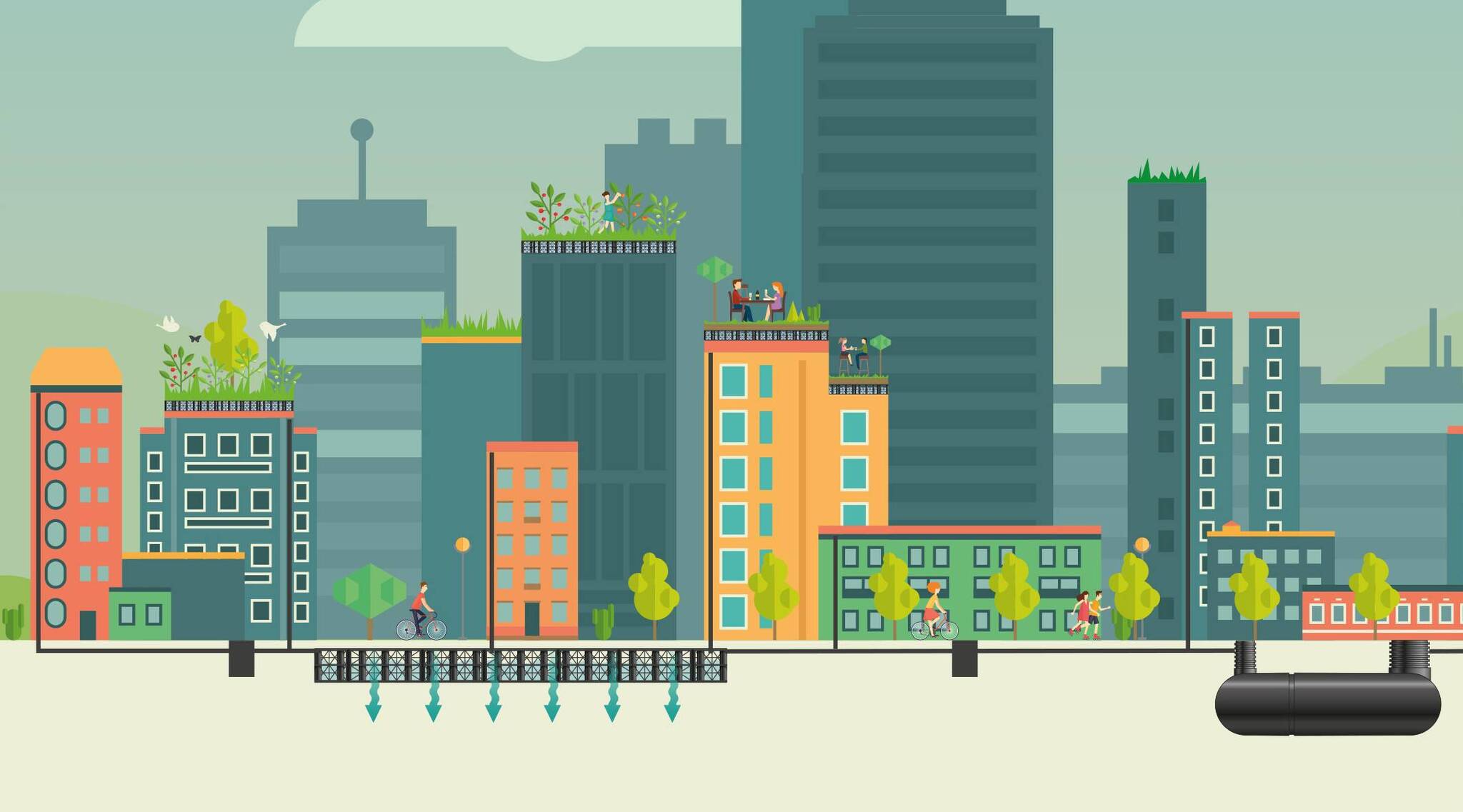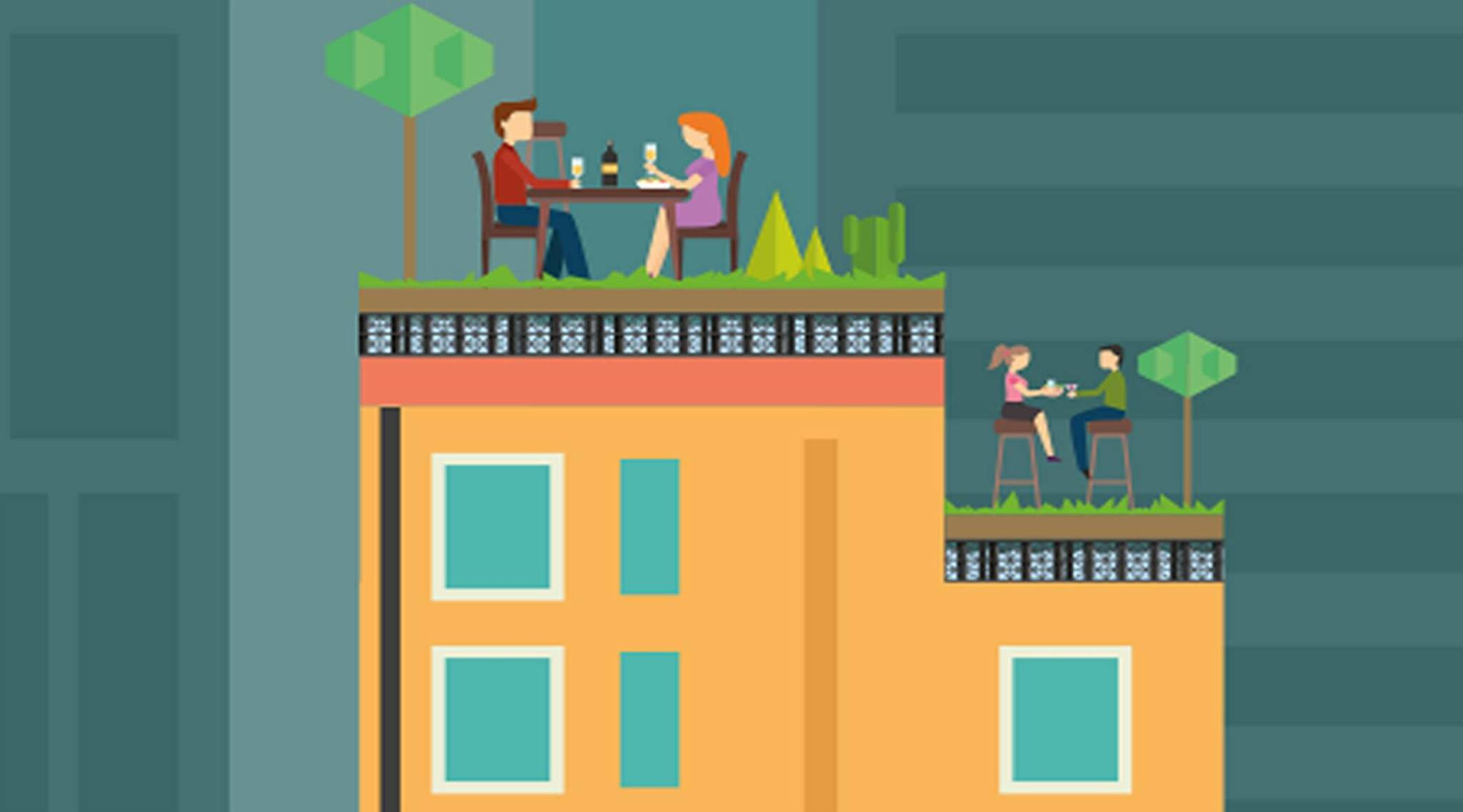Green Infrastructure: Multifunctional Benefits
When it rains, particularly in extreme cases, the rainwater needs somewhere to go. Unfortunately, in many urbanised environments, rainwater run-off finds its way into our sewer systems causing extreme flooding, and in turn can disrupt natural soakaways. This results in saturation and further flooding downstream. It’s therefore imperative to design projects that include areas where water can be intercepted and stored. Drainage systems are not just for conveyance, but can also irrigate green spaces above via our capillary cones.
These systems provide gardens and amenity at roof level: bioretention systems, detention basins and rain gardens. All three can accommodate rainwater run-off whilst attracting biodiversity. Swales – natural or engineered, permeable pavements and even sports pitches; which capture, store, attenuate and irrigate whilst cooling the air through evaporation, make that all-important space for and an intelligent way to manage water. Delivering positive moves to reduce the strain on inner-city sewer systems and help lessen the impact on potable water usage.

Designing Green Infrastructure water management solutions, particularly at the early stages of a project, not only delivers a project that enhances a city’s resilience, but brings prosperity through added value. Simple design solutions such as creating a network of green corridors between urban areas, can encourage more activity. They also add more interesting environments en-route whilst improving ecological connectivity and providing important habitats to attract biodiversity.
Repurposing spaces in buildings or utilising ‘dead’ space to create amenity is also achievable designing with Blue/Green Infrastructure. With the use of podium decks, geocellular units and water treatment products, roof space and ground level hard surfaces can be transformed into workable and successful leisure and retail spaces. Rooftop restaurants and bars are gradually becoming commonplace, whilst commercial office car parks are hidden beneath workplace gardens that are fed via self-perpetuating, rainwater reuse irrigation systems.
We understand how to achieve these positive outcomes, designing products that make space for water such as Polypipe geocellular systems including capillary cones for wicking – to be able to create such amenities as rooftop restaurants, parkland above underground car parks and greener spaces within cities. BGI can transform retail spaces to increase trade by up to as much as 40%2. Whilst a more vibrant green environment has been found to boost property prices by 2.6% to 11.3%.3
Furthermore, they attract inward investment, increase land values and improve planning application and government tender success rates4.

Green infrastructure X


